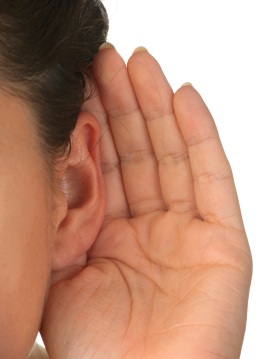PD Training’s Managing Director, Karen Winfield, was recently interviewed by the Sydney Morning Herald regarding the concept of Active Listening.
See the Article reproduced below:
“People often tell Barbara Clifford that she’s a wonderful listener. “They’ll say, ‘Wow, I can’t believe you remembered that,’ or ‘I can’t believe you remembered everybody’s name in the room’,” the 48-year-old says.
It’s not like Barbara was born with an exceptional memory. Instead, the time-management strategist at The Time Tamer consultancy says she’s a natural “talker” who’s had to knuckle down to master the art of active listening.
“People love to talk, especially about themselves; people love to be heard,” she says. “So if you can communicate that you’ve heard what somebody said, that’s probably the most powerful tool you can utilise to build credibility with people you connect with.”
To access that tool, Barbara relies on a range of different techniques. These kick into gear the moment she meets someone new. “I’ll say, ‘Did you say your name was Hilde? Oh, thanks, Hilde. What do you do for a living, Hilde?’ The more you reaffirm their name with them, the more likely you are to remember it.”
But active listening isn’t just about memorising what people say. It’s also about making them feel heard as they speak. Barbara does that by pausing often, using body language, focusing on the tone of the speaker, then paraphrasing what they said.
It also helps to pepper conversations with the other person’s name, Barbara adds. “The sweetest sound to anybody is their own name, so they will feel like they’re being listened to if you say it.”
Karen Winfield was a corporate trainer in professional development skills before becoming the managing director and co-owner of PD Training. She believes active listening is a pivotal skill everyone should learn. “And it is a learnt skill. You have to be very conscious of making an effort to do it.”
In other words, says Winfield, you need to stop whatever else you are doing. “Then make the effort to decide, ‘I am going to listen’ rather than let your head run around and focus on a million other things.”
Next, look at the person you’re talking to and concentrate on listening, not just to their words and tone, but also to non-verbal cues such as body language. “Someone might be saying that they’re happy as Larry, but their tone might not be saying that,” Winfield says. “Make sure you pick up on that.”
To show you’ve really absorbed what the other person has said, summarise their main points, or ask questions. And, unless you have a good reason, don’t interrupt. Jumping in to add to the story “breaks the speaker’s flow”, says Winfield. The only time it’s OK is to let the other person know something, such as if you need to dash off.
There’s a specific kind of stress caused by your brain on a screen
It’s easier to talk than to listen, psychologist Dr Marny Lishman acknowledges, which is why listening is a skill worth honing. “Usually people don’t listen completely and are thinking about what they are going to say next,” she says. That leads to fewer meaningful interactions as we scramble to speak rather than absorb what we’ve heard.
Active listening, on the other hand, fosters a deeper sense of connection. Making others feel heard demonstrates that you care about them and value what they have to say. It can also help with problem solving, as ideas are often clarified when bounced around.
Furthermore, Winfield says, when you truly listen to what others say, you not only understand them better, you learn about yourself. “There’s so much growth you can have personally when you’re actively listening to someone else.”
